How to Keep Your Home Cool in Summer: 12 Energy-Efficient Tips From Someone Who Grew Up Without Aircon
Discover practical, energy-efficient ways to keep your home cool this summer in Australia. Expert tips on natural cooling, budget-friendly solutions, and smart cooling strategies. Save money while staying comfortable.
By Yann Guihard, Alpaca Solutions founder and home energy efficiency expert.
12/10/2024
How to Keep Your Home Cool in Summer: 12 Energy-Efficient Tips From Someone Who Grew Up Without Aircon
Discover practical, energy-efficient ways to keep your Australian home cool this summer. Alpaca Solutions' home energy expert provide his tips on natural cooling, budget-friendly solutions, and smart cooling strategies.
By Yann Guihard, Alpaca Solutions founder and home energy efficiency expert.
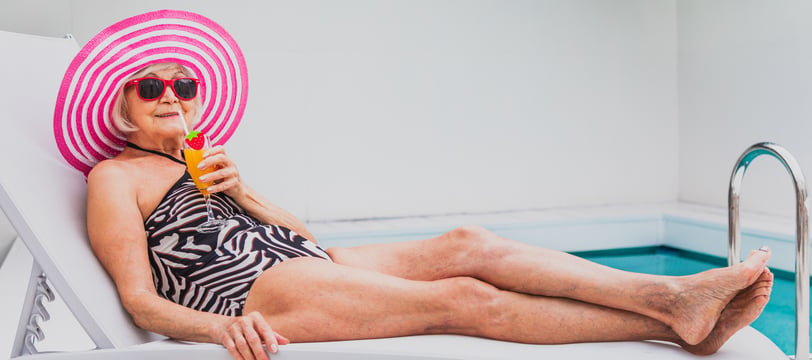

As Australian summers become increasingly warm, keeping your home cool while managing energy costs is more important than ever. Turning up the air-conditioning should be a last-resort approach, as it puts a strain on your wallet, the energy grid, and the environment – unless of course it is powered by your own solar-generated electricity.
I grew up in the French Southern countryside where most homes have historically been built without air conditioning. Yet summers can get pretty hot over there too, so for a few months per year we had to rely on basic natural cooling techniques.
It turns out, that worked pretty well and my family never once considered investing in a mechanical cooling system.
This comprehensive guide offers practical solutions for maintaining a comfortable home temperature without breaking the bank.
Understanding Home Cooling in Australia's Climate
Granted, Australian homes face unique cooling challenges due to our intense summer heat coupled with above average humidity. With temperatures regularly exceeding 35°C in many regions and for extended periods of time, finding energy-efficient cooling solutions is essential for both comfort and sustainability. The key is combining passive cooling strategies with smart use of cooling systems.
Natural Cooling Solutions
These are the strategies I learnt to master in the French summers. They are your first line of defense against the heat:
1. Strategic Window Management
I used to get in trouble with my mom as a child if I wasn’t following her strict summer window management schedule. And she was right: the timing of window operations can significantly impact your home's temperature.
Close your windows, blinds, and curtains before the heat builds up in the morning. External shading blocks up to 80% of summer heat and is more effective at keeping your home cool than internal blinds or curtains. Then when evening arrives and temperatures drop, open windows to let the cool breeze circulate through your home and flush out warm air. That’s when you want to create cross-ventilation by opening windows on opposite sides of your home. This natural airflow can significantly reduce indoor temperatures without using any energy.
2. Create Effective Shade
External shading is better than internal coverings. An effective shading strategy around your home can reduce indoor temperatures by up to 6-10 degrees. Create shade for walls and windows that receive direct sunlight by using solutions such as:
Retractable awnings, that can be adjusted seasonally so you can still benefit from the winter sun.
Pergolas with deciduous vines for natural seasonal adjustment.
Strategic tree planting – having deciduous trees on the North and West sides is optimal.
Shade sails for immediate coverage of outdoor areas.
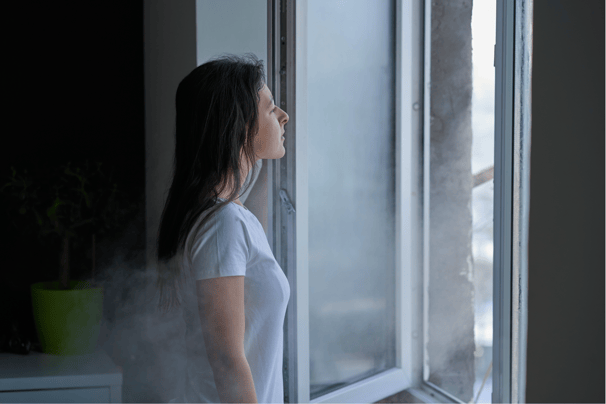

3. Cook Outside
Use outdoor spaces for heat-generating activities like cooking. That’s right, using the barbecue actually helps cooling your home so don’t hesitate to put another shrimp on the barbie!
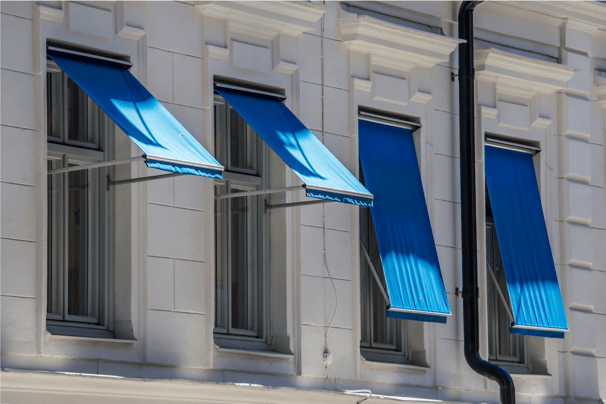

Budget-Friendly Cooling Methods
These natural cooling techniques above are often sufficient if your house is well oriented. But sometimes it may not be possible to effectively shade some areas. Or the heat might still get too intense at the peak of summer. These cost-effective techniques are also very effective to keep cool:
4. Fans Are Your Best Friends
Air movement can make you feel 3 to 6 degrees cooler instantly. Position pedestal fans strategically to create cooling air circulation patterns. Even if you have air-conditioning, use ceiling fans in conjunction with aircon to improve efficiency. This way you can set your AC thermostat higher and save energy.
In summer, set ceiling fans to rotate counter-clockwise. And remember fans cool people, not rooms, so turn them off in empty spaces. Finally, don't forget to use bathroom and kitchen exhaust fans to remove hot, humid air.
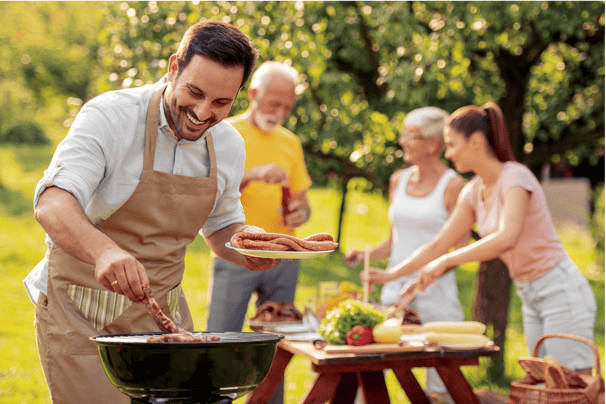

5. Window Coverings
Install heavy or sun-blocking curtains and blinds. Even if external shade is more effective at blocking heat, these act as an additional barrier against heat and can make a noticeable difference to indoor temperatures.
6. Seal Up Your House
Seal gaps around doors and windows to prevent cool air escape. This simple and cost-effective step can significantly improve your home's thermal efficiency and reduce cooling costs.
Gaps can also be present in many other places around the house. If you add them all up, it has been estimated that the average Australian house has a 1 square meter hole in it! Check out this handy little drawing from Sustainable Energy Authority Victoria for all the places you can look for gaps to seal up:
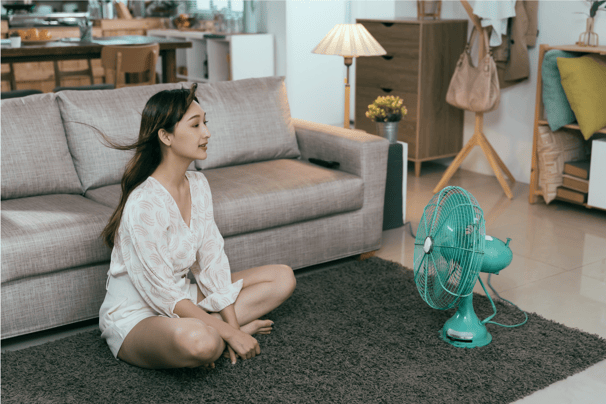

Energy-Efficient Cooling Systems
Now, I get it, despite all else sometimes it just gets too hot and we do need to turn that air-conditioner on. And that’s fine! Reverse-cycle air-conditioners are actually heat pumps. That means they don’t create coolness, they just pump heat out of your room. Which makes them very efficient – for each kW of power they use, they can pump 4 to 5 kW of heat.
7. Smart Air Conditioner Use
Here are a few tips to make the best use of these air-conditioners:
Increase the thermostat setting. Each degree higher reduces the power consumption of your appliance by about 10%. A temperature setting of 24-26°C is usually sufficient for most people to feel comfortable, or even higher if you also use ceiling fans. Most air-conditioners work at their best when there is an 8°C difference between outdoor and indoor temperatures. For instance, set your air conditioner to around 24°C when it's 32°C outside.
Make sure your air conditioners are well maintained. Service them annually at the beginning of summer, and clean filters regularly for better performance.
Air-conditioners conveniently come with a star rating that measures their efficiency. The more stars, the less power they use. When you need to replace your aircon, look for the stars and choose the most efficient model possible.
8. Zoning Your Home
You can also maximise cooling efficiency through smart space management. Close off unused rooms to concentrate cooling where needed. This reduces the area your cooling system needs to manage, improving efficiency and reducing costs.
Use door snakes at the bottom of internal doors to prevent cool air escape to other rooms, and use the timer settings to cool only when needed. For larger homes, you can also consider installing zone-control systems.
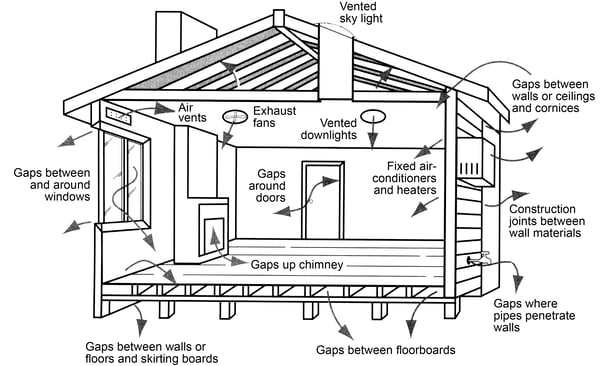

Common Air Leakage Points
Source: YourHome and Sustainable Energy Authority Victoria
Permanent Home Improvements
Back in the French summers, I often heard my parents say air-conditioning is an expensive band-aid for poorly designed homes. And it is true that even in Australia, in most non-tropical climate zones air-conditioning only becomes necessary a few days per year in a well-designed, well-insulated home.
Of course, the upgrades listed below can be a significant investment. But they do make a huge difference and bring noticeable improvements in comfort year-round.
9. Insulation Upgrades
I often hear people say, “insulation is to keep warm in colder climates only”. But that couldn’t be further from the truth. Quality insulation brings year-round benefits. Well-insulated walls and ceilings work like a styrofoam cooler, keeping heat out during summer. Consider upgrading your insulation as an investment in both comfort and energy efficiency.
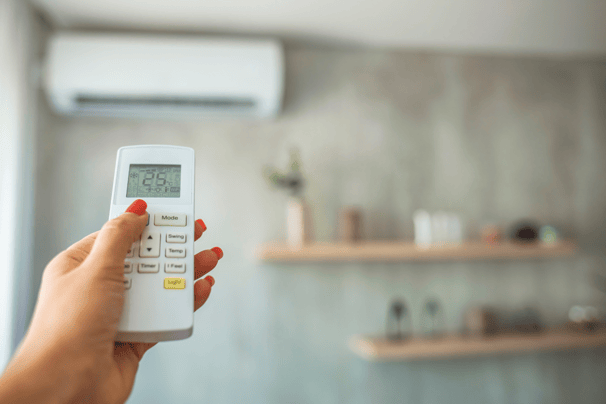

10. Window Upgrades
Windows are the weak link in the building envelope when it comes to heat transfers. Shading and window coverings are great to block the direct sun’s heat but they don’t prevent ambient heat transfer through the glazing.
Improve your window performance by installing double glazing for superior insulation. The tiny air gap between the two glazing panes is an effective barrier against the heat. And as a bonus it will also keep the heat inside in winter.
11. Garden Design
Design your garden to support cooling. For instance, plant deciduous trees strategically to create natural shade in summer while allowing winter sun through. You can also install water features in your garden to naturally cool the surrounding air.
Green walls or vertical gardens are also a great way to keep your walls cool. And generally, landscaped areas around your home with grass and lawn are much better than bare concrete or pavers that store and reflect heat.
12. Smart Home Integration
Leverage technology for optimal cooling in your home:
Install programmable thermostats
Use smart sensors for temperature monitoring
Automate blind and window operations
Monitor energy usage in real-time
Integrate cooling with home automation systems
Practical Implementation
Start with the no-cost solutions like strategic window management and existing fan use. Then gradually implement other measures based on your budget and needs.
Remember that combining multiple strategies will give you the best results, and even small changes can make a significant difference to both your comfort and energy bills during Australia's hot summers.
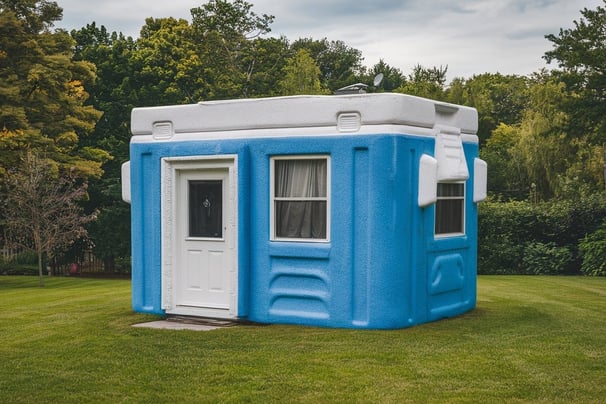

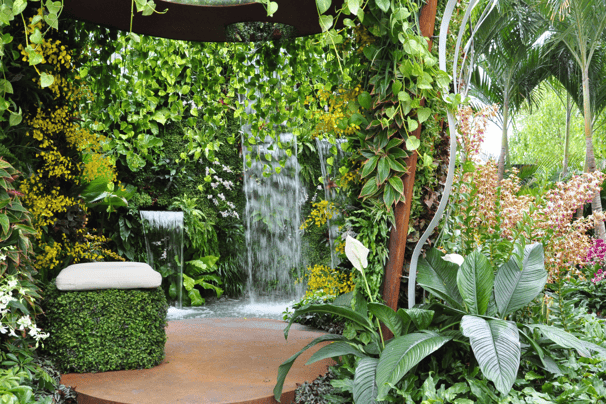



YOUR HOME ENERGY PARTNER
© 2024 Alpaca Solutions. All Rights Reserved. | Privacy Policy | Cookie Policy | Terms & Conditions
REQUEST A CALL BACK
Fill in your details and one of our experts will call you back.
Alpaca Solutions orchestrates the energy efficiency upgrades for your home and is your single point of contact from initial assessment to completion of works.
We are based in Sydney and are able to deliver projects Australia-wide.
